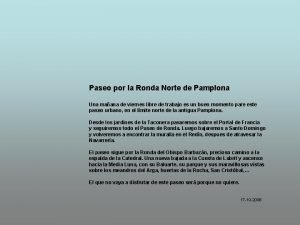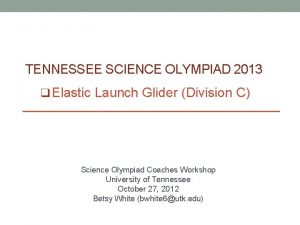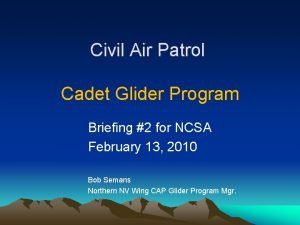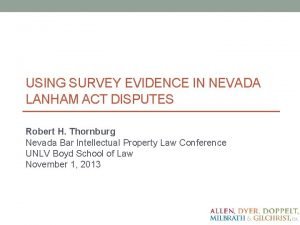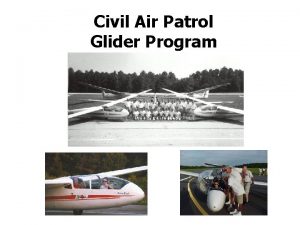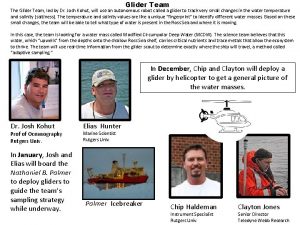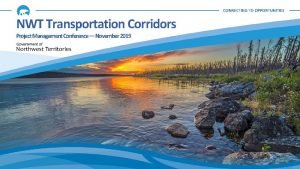Glider surveys and corridors project July 2020 Ronda


















- Slides: 18

Glider surveys and corridors project July 2020 Ronda Green, Ph. D (Chair Scenic Rim Branch WPSQ)

Major current project for the Scenic Rim branch of Wildlife Queensland Establish secure areas of habitat for squirrel gliders and associated wildlife species Establish movement corridors between these

Where and what is the Scenic Rim? Scenic Rim An arc of high country created by volcanoes between 25 and 22 million years ago, west and south from Brisbane A biodiversity hotspot

Two definitions: political and geographical

Gliders of the Scenic Rim Greater Yellow-bellied Squirrel Sugar Feathertail

Gliders of the Scenic Rim Most live in dense mountain forests, relatively well-protected by national parks and other reserves. The squirrel glider prefers lowland, more open forests, which are less protected and more fragmented.

Glider workshops & surveys In 2014 and 2015 we conducted glider workshops and surveys seeking gliders, especially squirrel gliders, funded by the Scenic Rim Regional Council Questions Where are they (location and habitat)? What are they eating? Methods Nocturnal searches Motion-sensing cameras

Workshops We held free public workshops on gliders including their identification, ecology and conservation threats and what we could do to help them

Distinguishing between sugar and squirrel Sugar gliders are also smaller and their tails aren’t quite as bushy

During workshops: Martin Fingland brought these charming little creatures along to meet us

Cameras

Gliders revealed by motion-sensing cameras on Bill O’Sullivan’s property, lower Duck Creek Rd

Other wildlife is also recorded Brush-tailed phascogale, Ian Beale, Barney View Northern brown bandicoot, Philip Parker, Kooralbyn

Glider searches Many people, all ages, joined in Socialising with drinks and snacks was welcome and useful for discussions The aim was both to look for gliders and train people how to do so We also recorded other species Some participants regarded it as a tour to see the gliders, instead of investigation where their presence was unknown We still need a lot more searches

Glider searches After several nights of searching various localities we found our first glider, at Wallaces Creek near Boonah

Approximate locations of squirrel glider sightings

Fragmentation causes impediments to movements Gliders need to move: daily (from resting to feeding areas) to seek additional food sources in lean times, to find a mate (and if restricted to a fragment there can be deleterious inbreeding), and to escape natural or manmade threats such as severe fire or clear-felling of habitat And they need trees or other high places to glide from

Squirrel gliders most commonly live in lower-altitude, more open, drier forests and woodlands This habitat is fragmented in the Scenic Rim They mostly eat nectar, pollen, gum, sap and insects They are pollinators – not yet sure how important – and may be occasional seed dispersers
 Cambalache paseo de ronda
Cambalache paseo de ronda 5 oraciones enunciativas
5 oraciones enunciativas Tent corridors
Tent corridors A motorist should know that he she is entering
A motorist should know that he she is entering Core network corridors
Core network corridors Glider wing design
Glider wing design Tender definition
Tender definition How to tell if your sugar glider is pregnant
How to tell if your sugar glider is pregnant Balsa wood glider dimensions
Balsa wood glider dimensions High strength to weight ratio
High strength to weight ratio Elastic launch glider
Elastic launch glider Civil air patrol glider
Civil air patrol glider Gravity glider brain gym
Gravity glider brain gym Wright turn glider
Wright turn glider Surveys, experiments, and observational studies worksheet
Surveys, experiments, and observational studies worksheet Surveys experiments and observational studies 8-3 answers
Surveys experiments and observational studies 8-3 answers Lesson 3.5 sampling and surveys
Lesson 3.5 sampling and surveys April may june july
April may june july Lanham act survey
Lanham act survey
